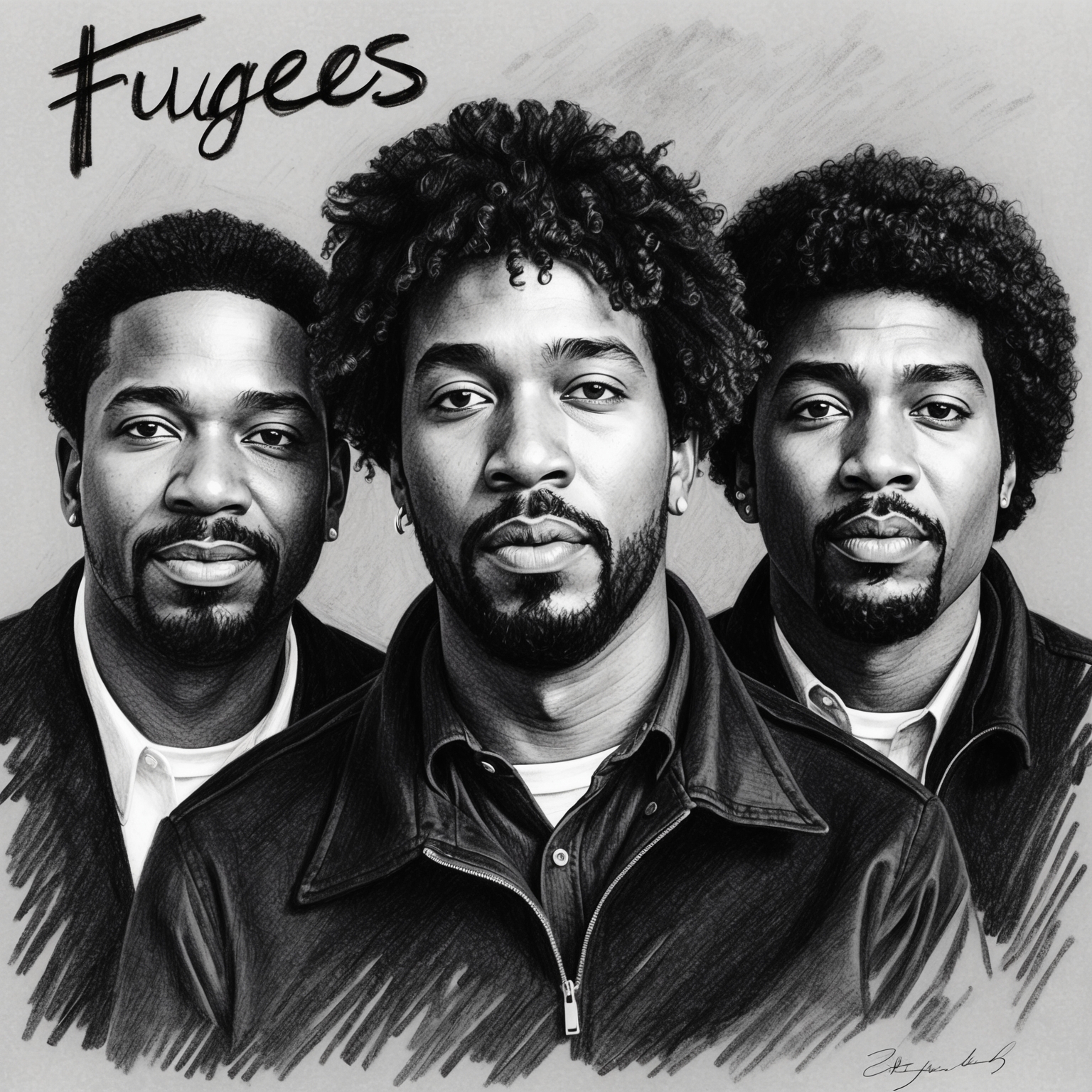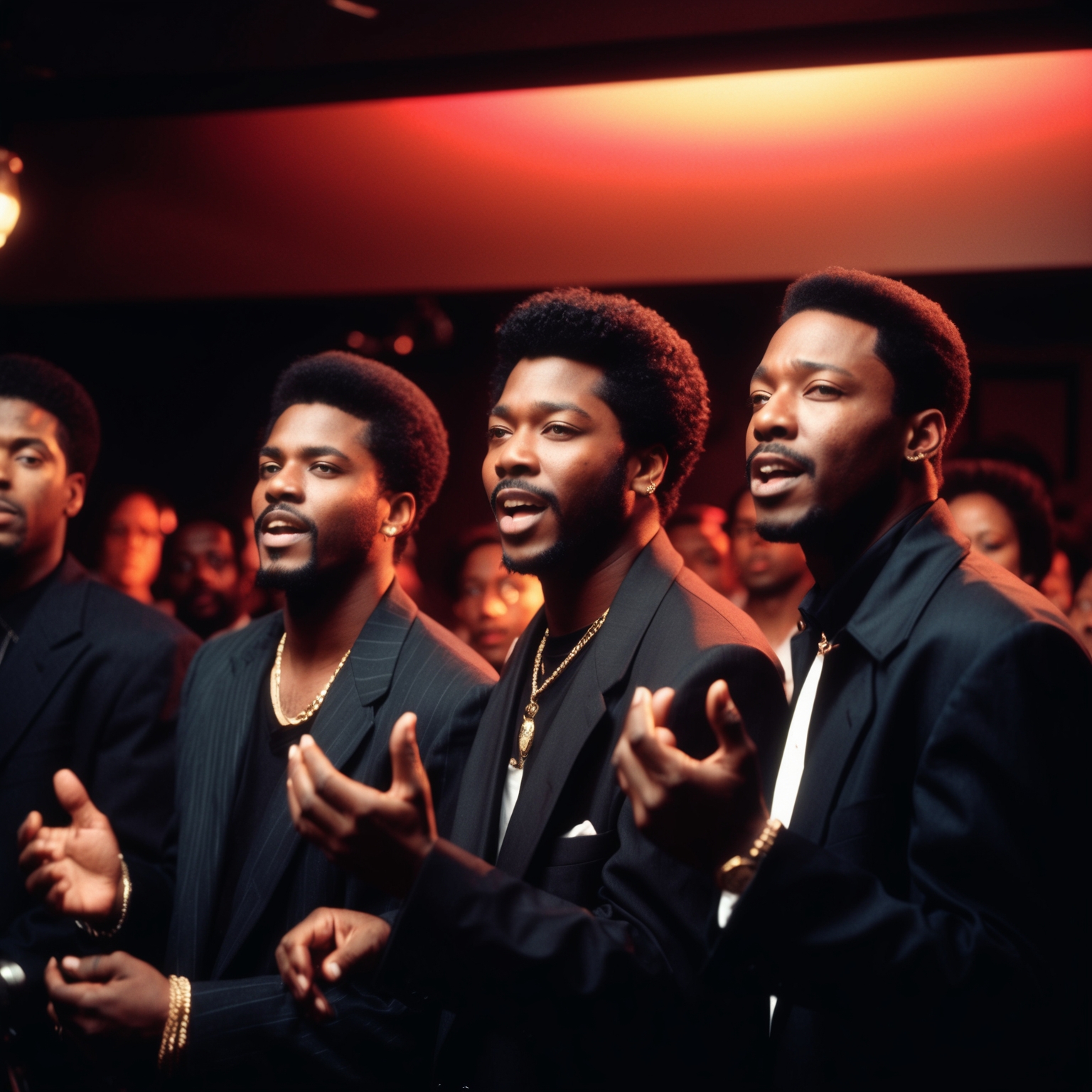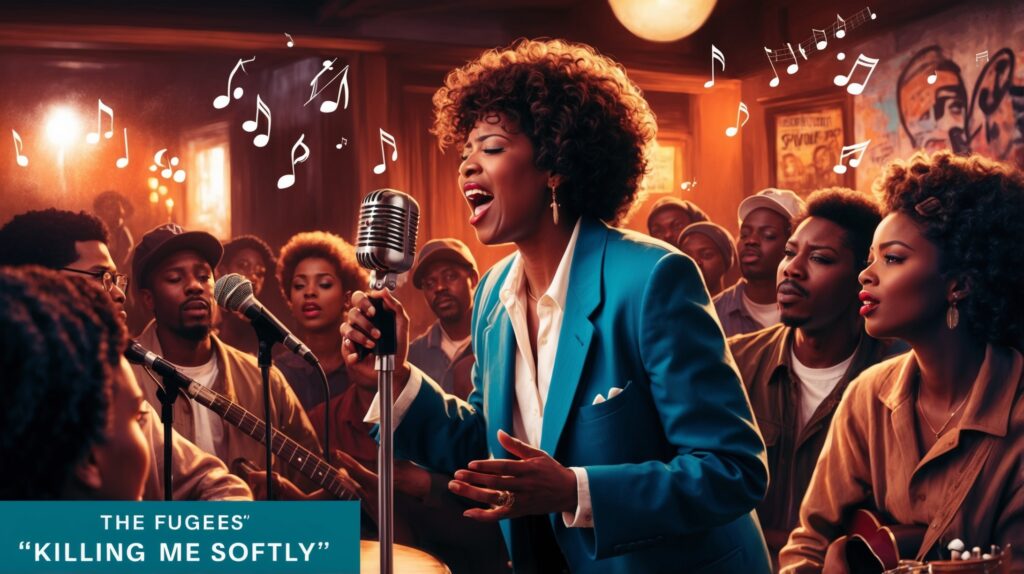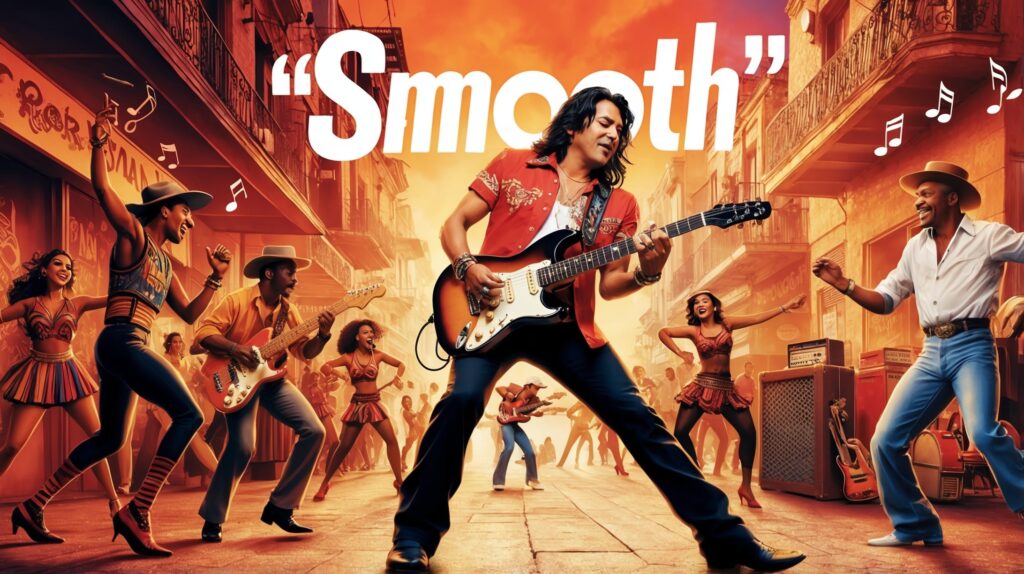The Fugees: Trailblazers of 90s Hip-Hop and R&B
Explore the impact and creativity of the Fugees, a trio that redefined 90s music with their unique sound and iconic cover, “Killing Me Softly.”

The Fugees left an indelible mark on the 1990s music scene with their unique blend of hip-hop and R&B, and no song showcases their prowess more than their hit cover, “Killing Me Softly.” Comprised of rapper/singer Lauryn Hill, rapper/producer Wyclef Jean, and rapper Pras Michel, the Fugees quickly rose to fame with their distinctive sound and socially conscious lyrics. Their approach fused lyrical storytelling and diverse musical influences, appealing to a wide array of audiences. This adept melding of styles is evident in their chart-topping second album, ‘The Score,’ which brought them international fame.
While the Fugees’ rendition of “Killing Me Softly” became synonymous with their name, it also played a pivotal role in their career trajectory. Lauryn Hill’s soulful voice became the heart of the track, drawing in listeners with a blend of intensity and emotion that showcased her vast range and vocal power. Wyclef Jean and Pras Michel provided the supporting framework, blending hip-hop rhythms with Hill’s soaring melody, which led to the group’s legendary status. This song highlighted each member’s talents and demonstrated their ability to reinterpret a classic while making it their own.
Released during an era where hip-hop was evolving and branching into mainstream consciousness, “Killing Me Softly” was a groundbreaking track. The Fugees’ interpretation resonated powerfully with audiences, many of whom were navigating the shifting landscape of 90s music. The trio’s collaboration brought a freshness to the industry, marking the song as a timeless piece. Their creative process involved each member contributing their unique touch, resulting in a song celebrated not only within hip-hop circles but across various genres. Consequently, the Fugees cemented their standing as pioneers who adeptly bridged different musical worlds.
The Musical Minds Behind ‘Killing Me Softly’
Explore the legacy of Charles Fox, the legendary composer behind the timeless melodies of ‘Killing Me Softly’. Delve into his musical journey, style, and the everlasting impact of his compositions on the Fugees’ iconic cover.

Background and Career: The original composition of ‘Killing Me Softly with His Song’, the masterpiece covered by the Fugees, is credited to Charles Fox with lyrics by Norman Gimbel. Charles Fox, a renowned American composer, has an extensive background in music education, having studied under legendary composers like Nadia Boulanger in Paris. Fox’s career highlights his versatility, having composed for various media, including television, films, and stage, showcasing his breadth of knowledge and expertise in different musical disciplines.
Musical Style and Influences: Charles Fox’s musical style is characterized by its melodic richness and emotive depth, often blending elements from jazz, pop, and classical music to create universally appealing compositions. His influences are diverse, reflected in his ability to craft music that resonates with a wide audience. By incorporating smooth harmonies and thoughtful instrumentation, Fox’s work exemplifies timeless elegance, resonating through his contributions to classic hits like ‘Killing Me Softly’.
Role in the Song’s Creation: In the original composition of ‘Killing Me Softly with His Song’, Charles Fox’s role was critical in creating the haunting yet tender melodies that underpin the song’s emotive lyrical delivery. His skillful composition played a pivotal role in crafting the song’s timeless appeal, allowing interpreters like the Fugees to bring their unique flavor while retaining the song’s profound emotional impact. Fox’s nuanced approach to melody and harmony ensures that the song remains as captivating and influential today as it was upon its release.
Acclaim and Recognition: Fugees’ Impact with ‘Killing Me Softly’
Explore the acclaimed journey of the Fugees’ rendition of ‘Killing Me Softly,’ from Grammy wins to notable covers and its influence in film and television.

The Fugees’ rendition of **’Killing Me Softly’** not only captivated audiences but also garnered significant recognition in the music industry. The song received a Grammy Award for Best R&B Performance by a Duo or Group with Vocals in 1997, a testament to its impact and the group’s unique style. The fresh approach and Lauryn Hill’s soulful voice breathed new life into this classic, allowing the Fugees to make an indelible mark on chart history.
Interestingly, the song’s journey continued beyond the Fugees. Various artists have covered ‘Killing Me Softly,’ adding their unique twists to the timeless song. Notable covers include renditions by Colbie Caillat, released in 2009, which provided a softer, acoustic take, and Alicia Keys, who often includes it in her live performances, showcasing the song’s enduring appeal across different musical styles.
The song’s influence extends beyond music covers, having made its way into popular culture through film and television. The familiar tune played a memorable role in the comedy film **’About a Boy’**, emphasizing its emotional resonance and its ability to enhance storytelling. Additionally, numerous TV shows and commercials have used the iconic track, demonstrating how ‘Killing Me Softly’ has transcended its original format to become a versatile piece of art that continues to capture hearts worldwide.
A Remarkable Climb to the Top: Charting the Success of ‘Killing Me Softly’
Dive into the chart success of the Fugees’ “Killing Me Softly,” exploring its rise to mainstream popularity, its unique appeal in the 90s music landscape, and the significant role it played in solidifying the group’s legacy.

Released in May 1996, the Fugees’ rendition of “Killing Me Softly” took the music world by storm, achieving significant chart success across numerous countries. The song quickly rose through the ranks, initially entering the Billboard Hot 100 before securing a peak position at number two. Its powerful blend of Lauryn Hill’s soulful vocals and the group’s unique hip-hop style resonated with audiences worldwide, maintaining its presence on the charts for an impressive stretch.
Compared to other tracks during its time, “Killing Me Softly” stood out with its fusion of classic and contemporary elements. While other songs of 1996 leaned heavily toward pop and rock, the Fugees provided a refreshing twist, which not only appealed to fans of the original version by Roberta Flack but also introduced the track to a newer, younger demographic. The contrast between this and other chart-topper selections of the time accentuated its distinct appeal.
This song marked a pivotal moment in the Fugees’ career trajectory, establishing them as prominent figures in the global music scene. It was a breakthrough hit following their success with “Fu-Gee-La,” further building their reputation. The success of “Killing Me Softly” was driven by extensive marketing strategies, including memorable live performances and appearances that highlighted Lauryn Hill’s iconic vocal delivery. These efforts, coupled with the captivating music video, ensured the song’s broad appeal and enduring presence on playlists.
The Visual Journey of ‘Killing Me Softly’
Dive into the cinematic world of the ‘Killing Me Softly’ music video, where artistic visuals intertwine with thematic depth, amplifying the song’s emotional resonance.

The striking visual interpretation of **Fugees’ ‘Killing Me Softly’** significantly contributed to the song’s immense popularity. Released in 1996, the music video captures the essence of the track—a blend of soulful introspection and urban realness. Directed by Aswad Ayinde, the video is a cinematic journey that intertwines compelling storylines with atmospheric performance shots. It artfully portrays the narrative of emotional vulnerability that the song encapsulates. Through its gripping visuals, the music video transcends the traditional, ensuring it remains in the zeitgeist of the 90s.
The themes of longing, love, and personal reflection are vividly brought to life in the video, where we see the band performing in evocative settings— a dimly lit club, bustling streets, and intimate close-ups, enhancing the song’s emotive power. Lauryn Hill’s soaring vocals are matched visually with scenes that evoke empathy and connection. The use of warm tones and deft camera work further amplifies the intimacy of the storytelling. This astute attention to detail has helped the video remain iconic, resonating deeply with fans, both old and new.
Critical reception of the ‘Killing Me Softly’ music video was overwhelmingly positive, with fans and critics alike praising its artistic and thematic depth. Although no celebrities had cameos in the video, the spotlight was firmly set on the members of the Fugees, allowing their raw talent and unique expressions to shine through. Each member’s distinct style contributes seamlessly to the video’s charming cadence, helping elevate the song to a legendary status within the canon of hip-hop meets soulful expression.
Exploring the Musical Craftsmanship of ‘Killing Me Softly’
Dive into the intricate musical structure of the Fugees’ ‘Killing Me Softly,’ exploring its key, tempo, melody, and unique instrumentation, and discover what sets it apart in their discography.

Delving into the intricate musical tapestry of the Fugees’ version of ‘Killing Me Softly,’ one encounters a masterful interplay of rhythm, harmony, and instrumentation. Written primarily in the key of F minor, the song employs a series of carefully selected chord progressions that enhance both its emotional depth and soulful resonance. The tempo is set at approximately 84 beats per minute, providing a relaxed yet immersive backdrop that captivates listeners.
The melody of the song, carried by Lauryn Hill’s evocative vocals, melds effortlessly with the subtle harmonies woven by the supporting instruments. The rhythm section, primarily led by a gentle yet persistent drum beat, creates a seamless groove that resonates throughout the track. Meanwhile, the bass line adds a layer of richness with its smooth, syncopated patterns that elevate the overall sound.
Adding to the song’s unique auditory experience is a selection of instruments utilized in the Fugees’ version. The combination of acoustic guitar strums and soft keyboard undertones crafts a lush soundscape, while string arrangements complement the emotive quality of Hill’s voice. Comparatively, this song stands as a significant evolution in the artist’s discography, marking a departure from the raw energy of their previous work towards a more mature and refined artistic expression.
This track was recorded at the Booga Basement studio, where producer Jerry Wonda played a crucial role in shaping its sophisticated sound. An interesting anecdote from the recording session is how the band deliberately chose a minimalist setup to retain the song’s intimate vibe, focusing on enhancing the vocal delivery and subtle instrumental nuances over complex production techniques.
Exploring the Heartfelt Narration of ‘Killing Me Softly’
An exploration of ‘Killing Me Softly’s’ lyrics reveals a heartfelt narrative enriched with personal vulnerability, potent literary devices, and the evocative power of music as a vessel for emotional expression.
Yeah, we’re like that, yeah
We’re like that
Something like that, aye
Strumming my pain with his fingers (one time) yeah, yeah
Singing my life with his words (two times)
Killing me softly with his song
Killing me softly with his song
Telling my whole life with his words
Killing me softly with his song
Yeah, yeah, yeah
…
******* This Lyrics is NOT for Commercial use *******
 Lyrical Themes and Messages: At the core of ‘Killing Me Softly’, performed by Fugees, lies a deeply personal theme of vulnerability and emotional exposure. The song’s narrative revolves around a poignant experience where the singer feels as though their innermost pains and stories are being recounted by another, epitomizing the power of music to resonate personally and universally. This theme extends beyond personal reflection to encompass a broader commentary on the human condition, reflecting how music serves as a mirror to our own experiences. Such themes were particularly resonant during the 1990s, a time when introspective music became a vessel for emotional expression and connection.
Lyrical Themes and Messages: At the core of ‘Killing Me Softly’, performed by Fugees, lies a deeply personal theme of vulnerability and emotional exposure. The song’s narrative revolves around a poignant experience where the singer feels as though their innermost pains and stories are being recounted by another, epitomizing the power of music to resonate personally and universally. This theme extends beyond personal reflection to encompass a broader commentary on the human condition, reflecting how music serves as a mirror to our own experiences. Such themes were particularly resonant during the 1990s, a time when introspective music became a vessel for emotional expression and connection.
Narrative and Storytelling: The storytelling in ‘Killing Me Softly’ adopts a first-person perspective, enhancing its emotional impact. This perspective allows listeners to step into the singer’s shoes, experiencing the raw and intimate effect of music that seems to reach into one’s soul. The narrative paints a vivid picture of being overwhelmed by a song that feels intensely personal, encapsulating the transformative and sometimes haunting nature of music. This direct narrative approach helps to create an intimate atmosphere, allowing the audience to explore their own introspective experiences alongside the singer.
Use of Literary Devices: The lyrics are rich with literary devices that bolster their emotional power and storytelling quality. Metaphors like “strumming my pain with his fingers” illustrate the piercing effect of the music, intertwining auditory and emotional experiences. The repetitive structure found in “Killing me softly with his song” serves both as a lyrical anchor and a tool to emphasize the persistent and overwhelming nature of the emotions being expressed. Through these devices, the song crafts a compelling narrative that articulates the often indescribable impact music can have on our lives.
🎶 Did you know? The Fugees’ iconic “Killing Me Softly” almost topped Billboard in ’96, blending hip-hop and soul perfectly! 🎤🔥 #ThrowbackMagic #90sHits #FunFact tinyurl.com/yjp93492
Click to Tweet







